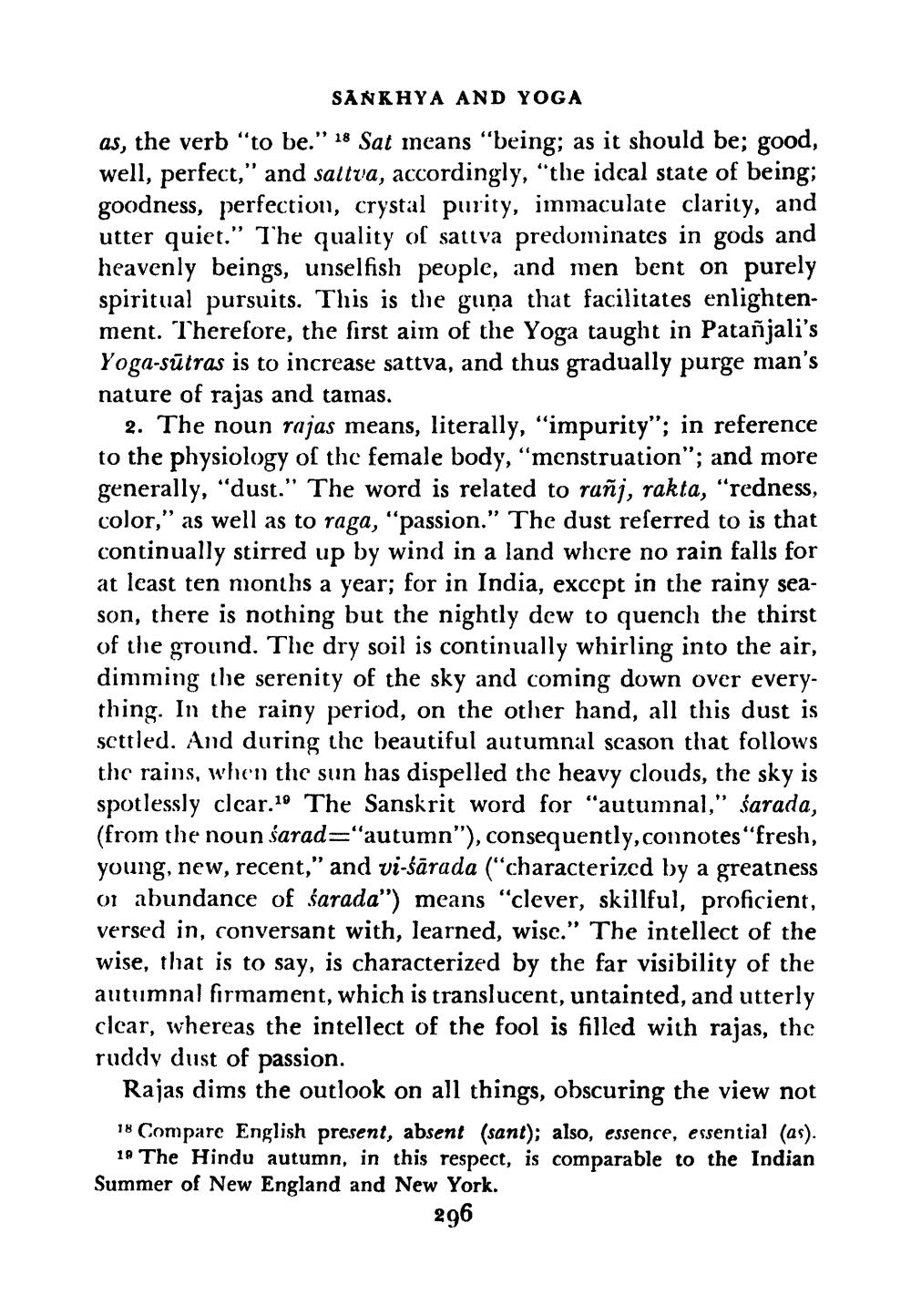________________
SANKHYA AND YOGA
as, the verb "to be.” 18 Sat ineans "being; as it should be; good, well, perfect," and saltva, accordingly, "the ideal state of being; goodness, perfection, crystal purity, immaculate clarity, and utter quiet.” The quality of sativa predominates in gods and heavenly beings, unselfish people, and men bent on purely spiritual pursuits. This is the guņa that facilitates enlightenment. Therefore, the first aim of the Yoga taught in Patañjali's Yoga-sūtras is to increase sattva, and thus gradually purge man's nature of rajas and tainas.
2. The noun rajas means, literally, "impurity"; in reference to the physiology of the female body, “menstruation"; and more generally, "dust." The word is related to ruñj, rakta, "redness, color," as well as to raga, "passion." The dust referred to is that continually stirred up by wind in a land where no rain falls for at least ten months a year; for in India, except in the rainy season, there is nothing but the nightly dew to quench the thirst of the ground. The dry soil is continually whirling into the air, dimming the serenity of the sky and coming down over everything. In the rainy period, on the other hand, all this dust is settled. And during the beautiful autumnal season that follows the rains, when the sun has dispelled the heavy clouds, the sky is spotlessly clear.19 The Sanskrit word for "autumnal,” śarada, (from the noun šarad="autumn"), consequently, connotes “fresh, young, new, recent," and vi-śārada ("characterized by a greatness 01 abundance of śarada") means "clever, skillful, proficient, versed in, conversant with, learned, wise." The intellect of the wise, that is to say, is characterized by the far visibility of the autumnal firmament, which is translucent, untainted, and utterly clear, whereas the intellect of the fool is filled with rajas, the ruddy dust of passion.
Rajas dims the outlook on all things, obscuring the view not 18 Compare English present, absent (sant); also, essence, essential (as).
19 The Hindu autumn, in this respect, is comparable to the Indian Summer of New England and New York.
296




